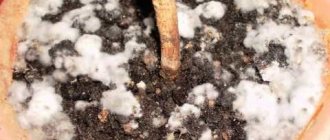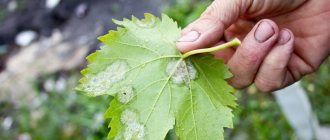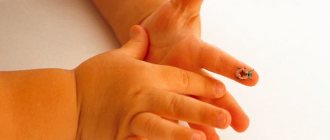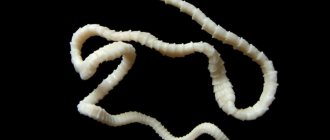Buy quality bread
The reasons why bread gets moldy are quite simple. Mold on bread forms:
- improper storage of bread. If the finished product is stored in a humid and warm room, these are the best conditions for the growth of fungus;
- violation of sanitary standards and temperature conditions. If the bread is baked incorrectly, you get mold.
- poor quality preparation. Move away from the traditional recipe to minimize costs - get mold on the bread. If you used low-quality products or any substitutes, the result is the same. Low-quality bread becomes moldy much more often and faster than bread baked according to the correct recipe.
What is the danger of bread mold poisoning?
Mycotoxins contained in mold can lead to severe food poisoning. The following symptoms appear:
- skin rashes,
- nausea and vomiting,
- pain in the head and stomach,
- fast fatiguability,
- flatulence and/or diarrhea.
If you inhale a large amount of mold spores, the respiratory system is affected first, so the victim may:
- cough a lot
- feel chest pain and nasal congestion,
- suffer from shortness of breath,
- breathe with whistling and wheezing.
Severe forms of such poisoning can include pneumonia and bronchial asthma.
At one time, when my husband and I were still living with his parents, I endured many battles with my mother-in-law over bread. According to my husband’s mother, a woman of the old school, throwing away moldy bread is a terrible sin. It should simply be cut off and placed on the dining table for further consumption. As a big fan of programs about a healthy lifestyle, I was already aware of the dangers of mold and secretly threw away bread with mold. In turn, the mother-in-law noticed this and decided that she would dry the spoiled loaf into breadcrumbs or feed it to pigeons. When my father-in-laws went to live in the country in the summer, I found such “gifts” with greenery and threw them away so that the bird population did not decrease.
With frequent consumption of bread contaminated with mold, even people with a strong immune system can develop mycoses - various diseases caused by parasitic types of fungus. One of the most dangerous forms of the disease is aspergillosis, the occurrence of which is provoked by the Aspergillus fungus. This pathology exists in different variations, the most dangerous of which can even lead to death. At risk are people whose immunity is subjected to artificial suppression (during organ transplantation, treatment of cancer), as well as patients with severe diseases of the respiratory organs - asthma, pulmonary tuberculosis, bronchiectasis, sarcoidosis.
Mold on bread can be different: black, gray, white.
Black mold on bread.
Professional mold removal
Moscow +7 (916) 356 2690;
St. Petersburg (921) 940 5760
The most common and dangerous type of mold. Most often it appears indoors, but it also affects food, including baked goods. Black mold on bread is very dangerous. Despite the fact that it was from this type of mold that the first antibiotic was invented, when it enters the digestive tract it causes poisoning and serious allergic reactions. Doctors advise not to take risks - black mold has appeared on the bread, throw it away without hesitation!
Green mold on bread
Another common type. Green fungus is rarely found on baked goods, but more often on fruits and vegetables. He especially loves dairy products. In any case, wherever mold appears, throw it away!
Pink mold on bread
Although this type of mold is safe for humans, you are unlikely to want to eat foods affected by the fungus. Agree, not appetizing!
Gray mold
Number two on the list of pathogenic fungal species dangerous to humans. The first sign that bread is immediately going to the trash can is the appearance of gray mold on the loaf. This type of fungus has the ability to multiply quickly and spread to any materials. That is, he will move from the bread to the bread bin, then to the table, and so on.
What happens if you eat bread that has started to mold?
It often happens that we reach for a piece of bread in a bag and find pale greenish dots on it. Some people throw the product away immediately, but for some, the presence of unexpected transformations does not stop them - they simply cut off the affected areas and continue to use the bread for its intended purpose. But how safe is it?
Olga Burlakova, a health specialist, naturopath, and author of the “Conscious Health System - CO2” method, talks about the processes occurring inside one of the most popular products of everyday consumption.
What happens in the body when mold gets into it?
Our body contains pathogenic microflora - fungi of the genus Candida. If we “add” mold fungi inside ourselves from the outside, they begin to compete with each other. Pathogenic microflora becomes irritated and quickly affects the body, which leads to a severe decrease in immunity - this is caused by the consumption of any moldy products.
What about mold cheese?
It is also harmful to the body, but less pathogenic than mold on bread. There are many types of molds: in the case of cheese, they are specially grown. Such fungi are not as dangerous as those on bread or bathtub. Therefore, nothing will happen if you eat blue cheese, but it is not recommended to do it all the time.
Consequences of eating mold
Consequences for the gastrointestinal tract and liver
Severe acidification begins: the body gives up its strength to cope with the external pest, and local immunity weakens. At this moment, a person is most susceptible to disease: today you eat moldy bread, and tomorrow you will “catch” the virus.
Molds are very tenacious: they are difficult to remove once they enter the body - this takes several weeks. A person may not be aware of the serious consequences that this leads to, and they can be very serious: autoimmune diseases, heart attack or oncology are a direct consequence of exposure to mold. Of course, this is not due to a single dose - there is a cumulative effect. But the body will remove the infection for at least two weeks, even if you ate a small piece of moldy bread.
Mold affects the entire product, so the consequences will be identical if you cut off a heavily affected piece of the product. You also need to throw away food that came into contact with spoiled bread or was in the same package.
View this post on Instagram
A post shared by Shamil











